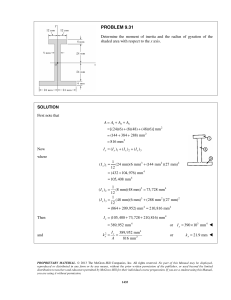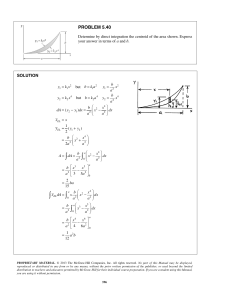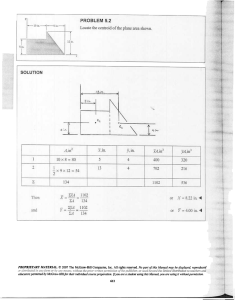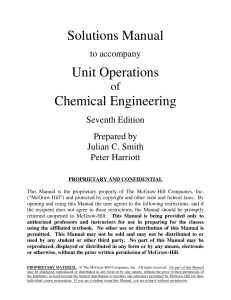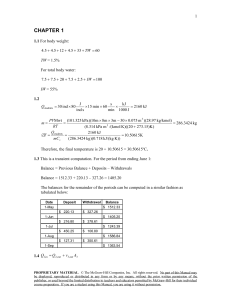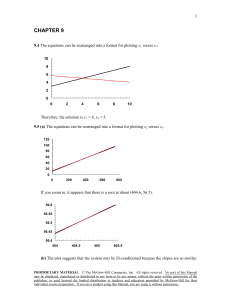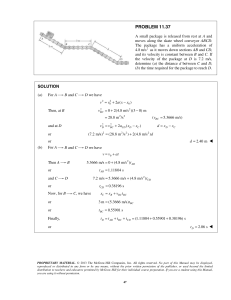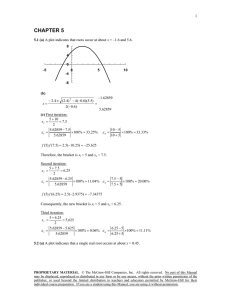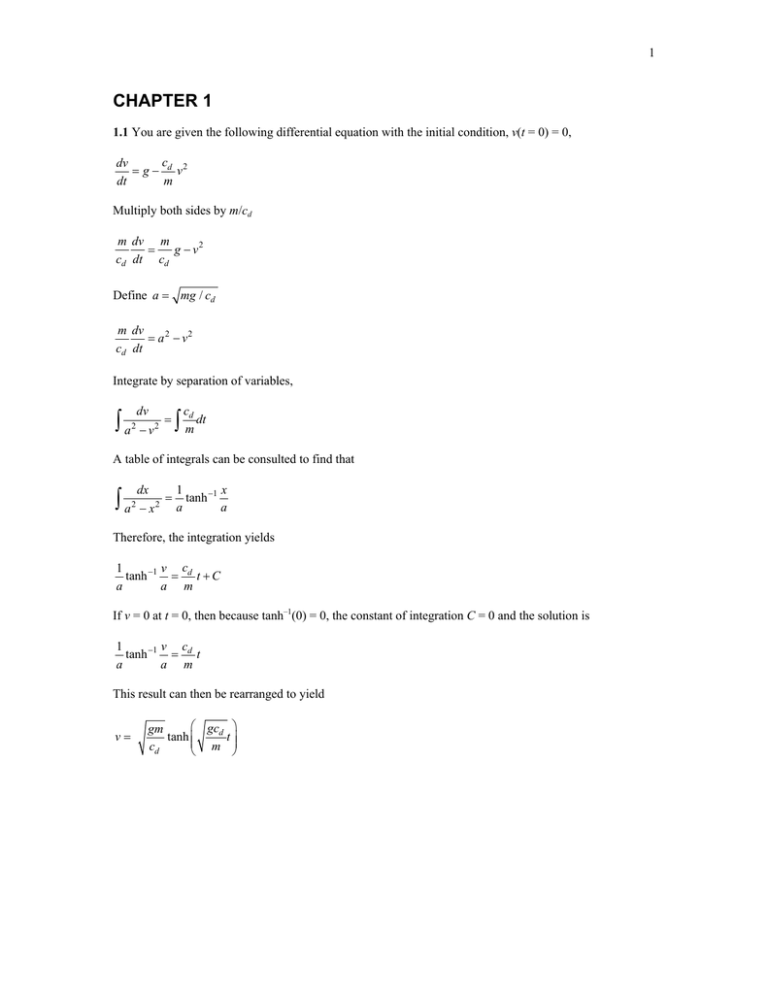
1
CHAPTER 1
1.1 You are given the following differential equation with the initial condition, v(t = 0) = 0,
c
dv
g d v2
dt
m
Multiply both sides by m/cd
m dv m
g v2
cd dt cd
Define a mg / cd
m dv
a2 v2
cd dt
Integrate by separation of variables,
a
dv
2
v
2
cd
m dt
A table of integrals can be consulted to find that
a
dx
2
x
2
1
x
tanh 1
a
a
Therefore, the integration yields
1
v c
tanh 1 d t C
a
a m
If v = 0 at t = 0, then because tanh–1(0) = 0, the constant of integration C = 0 and the solution is
v c
1
tanh 1 d t
a
a m
This result can then be rearranged to yield
v
gcd
gm
t
tanh
m
cd
1.2 (a) For the case where the initial velocity is positive (downward), Eq. (1.21) is
c
dv
g d v2
dt
m
Multiply both sides by m/cd
PROPRIETARY MATERIAL. © The McGraw-Hill Companies, Inc. All rights reserved. No part of this Manual
may be displayed, reproduced or distributed in any form or by any means, without the prior written permission of the
publisher, or used beyond the limited distribution to teachers and educators permitted by McGraw-Hill for their
individual course preparation. If you are a student using this Manual, you are using it without permission.
16
1.15 The volume of the droplet is related to the radius as
V
4 r 3
3
(1)
This equation can be solved for radius as
r
3
3V
4
(2)
The surface area is
A 4 r 2
(3)
Equation (2) can be substituted into Eq. (3) to express area as a function of volume
3V
A 4
4
2/3
This result can then be substituted into the original differential equation,
dV
3V
k 4
dt
4
2/3
(4)
The initial volume can be computed with Eq. (1),
V
4 r 3 4 (2.5)3
65.44985 mm3
3
3
Euler’s method can be used to integrate Eq. (4). Here are the beginning and last steps
t
V
dV/dt
0
0.25
0.5
0.75
1
65.44985
63.87905
62.33349
60.81296
59.31726
-6.28319
-6.18225
-6.08212
-5.98281
-5.8843
23.35079
22.56063
21.7884
21.03389
20.2969
-3.16064
-3.08893
-3.01804
-2.94795
-2.87868
•
•
•
9
9.25
9.5
9.75
10
A plot of the results is shown below. We have included the radius on this plot (dashed line and right scale):
PROPRIETARY MATERIAL. © The McGraw-Hill Companies, Inc. All rights reserved. No part of this Manual
may be displayed, reproduced or distributed in any form or by any means, without the prior written permission of the
publisher, or used beyond the limited distribution to teachers and educators permitted by McGraw-Hill for their
individual course preparation. If you are a student using this Manual, you are using it without permission.
17
80
V
60
40
2.4
r
2
20
1.6
0
0
2
4
6
8
10
Eq. (2) can be used to compute the final radius as
r
3
3(20.2969)
1.692182
4
Therefore, the average evaporation rate can be computed as
k
(2.5 1.692182) mm
mm
0.080782
10 min
min
which is approximately equal to the given evaporation rate of 0.08 mm/min.
1.16 Continuity at the nodes can be used to determine the flows as follows:
Q1 Q2 Q3 0.7 0.5 1.2 m3 s
Q10 Q1 1.2 m3 s
Q9 Q10 Q2 1.2 0.7 0.5 m3 s
Q4 Q9 Q8 0.5 0.3 0.2 m3 s
Q5 Q3 Q4 0.5 0.2 0.3 m3 s
Q6 Q5 Q7 0.3 0.1 0.2 m3 s
Therefore, the final results are
1.2
0.7
1.2
0.5
0.2
0.5
0.3
0.2
0.1
0.3
1.17 The first two steps can be computed as
T (1) 70 0.019(70 20) 2 68 ( 0.95)2 68.1
T (2) 68.1 0.019(68.1 20) 2 68.1 ( 0.9139)2 66.2722
The remaining results are displayed below along with a plot of the results.
PROPRIETARY MATERIAL. © The McGraw-Hill Companies, Inc. All rights reserved. No part of this Manual
may be displayed, reproduced or distributed in any form or by any means, without the prior written permission of the
publisher, or used beyond the limited distribution to teachers and educators permitted by McGraw-Hill for their
individual course preparation. If you are a student using this Manual, you are using it without permission.

